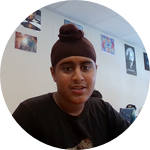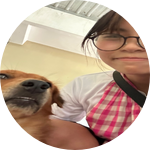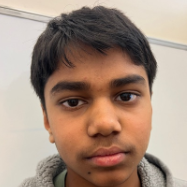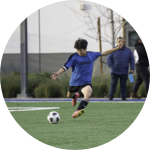About This Project
This project aims to streamline disaster recovery by using drones with machine learning for thermal and audio object detection, enabling faster response. The drone’s thermal camera detects human heat signatures, even if they are buried, while machine learning enhances object and voice detection. Data is sent to a ground station for fast, accurate results, using GPS to pinpoint survivors. A GPS bracelet will help locate individuals more precisely.
Ask the Scientists
Join The DiscussionWhat is the context of this research?
Disasters, whether natural or man-made, can have devastating impacts on communities, resulting in loss of life, injuries, and widespread damage. In the aftermath of such events, rapid response and effective search and rescue operations are crucial to saving lives and providing necessary relief to affected individuals. Traditional methods of locating survivors often involve extensive ground searches, which can be time-consuming and inefficient, particularly in large or difficult-to-access areas.
What is the significance of this project?
In recent years, advancements in unmanned aerial vehicle (UAV) technology have opened up new possibilities for enhancing disaster response efforts. UAVs equipped with advanced cameras, sensors, ML-systems, real-time communication capabilities, and autonomous navigation systems can significantly improve the speed and accuracy of locating individuals in distress. By leveraging aerial views, these UAVs can cover vast areas quickly, identifying survivors, assessing damage, and guiding emergency response teams to critical locations.
However, the effective deployment of UAVs in disaster scenarios requires careful consideration of various factors, including environmental challenges, regulatory compliance, and integration with existing emergency response frameworks.
What are the goals of the project?
The funds will be used to build a complete and functional 5 inch freestyle drone. The expense of the drone parts is due to the quality of them, which needs to be very high, as the drone needs high speeds, allowing the drone to function better and meet our engineering goal and criteria.
Once completed, which we expect to take around a month, the project will be tested and documented. Testing will include going to Sunnyvale Baylands Park for at least 3 days and running 50 trials per day, documenting the weather, range of drone communications, accuracy of the machine learning models, average speed of the drone, and average accuracy of the drone waypoint system.
At maximum, the project will be completed by January 25th, 2024.
Budget
All of the items above are essential to building a drone. The RemoteID module is needed to comply with FAA laws, as the project will be over 250 grams.
Items we already have are Motors, Propellers, VRX (Includes goggles and receving antennas), Ground Control Station (Laptop), Hardware (Screws, nuts), Tools (Soldering Iron, Screwdriver, Battery Charger).
All the software used in this project is open source and free for anyone to use.
Endorsed by
 Project Timeline
Project Timeline
Project construction will start when the campaign ends, around November 4th. We will start by constructing the drone, which we expect to take half a month. After this, for another half month we expect to work on the software side of things, which include scripting the kinematics algorithm and training and testing machine learning models. For another week, we will test the drone. Finally, for the last week, documentation about the project will be done.
Nov 20, 2024
Build drone
Nov 30, 2024
Testing drone
Dec 07, 2024
Finished presentation
Oct 31, 2025
Project Launched
Meet the Team
Team Bio
Vanessa Dinh is a 9th grader at Santa Clara High School. Vanesa is passionate about medical research and dedicating time to community service.
Pranay Bokde is a 9th grader at Santa Clara High School. Pranay likes to code and in his free time enjoys swimming.
Noah Song is a 9th grader at Santa Clara High school. Noah likes to play soccer and is passionate about hardware.
Vanessa Dinh
Vanessa Dinh is a 9th grader at Santa Clara High School. Vanesa is passionate about medical research and dedicating time to community service.
Pranay Bokde
Pranay Bokde is a 9th grader at Santa Clara High School. Pranay is passionate about computer science and computer engineering, and enjoys swimming and other sports.
Noah Song
Noah Song is a freshman that is part of the SLI ( STEM Leadership Institute) at Santa Clara High School. Drawn in by the potential and capabilities of science fair projects, Noah has participated in many renowned science fairs like the SCVSEFA (Santa Clara Valley Science and Engineering Fair Association), CSEF (California State Engineering Fair) and ThermoFisher JIC (ThermoFisher Junior Innovators Challenge) in the past 2 years receiving numerous accolades and awards. Hard working and consistent, Noah is excited to follow his next chapter of science projects with Experiment.com!
Lab Notes
Nothing posted yet.
Project Backers
- 1Backers
- 15%Funded
- $100Total Donations
- $100.00Average Donation




